Nothing shouts more of British summer and country cottage gardens than the tall spikes of blowsy blooms that are Hollyhocks. Resplendent in their beautiful gelato colours ranging from creamy whites to pinks that start from pale candyfloss to luscious raspberry right through to the deepest reds and purples, they manage to appear stately and majestic yet somewhat shabby too. Their flowers are wide trumpets comprised of delicate crinkly petals and they have large heart shaped leaves.
Part of the mallow family, the Alcea Rosea traces its roots back to Asia and Eastern Europe first making its appearance in Western gardens in the fifteenth century. It was said to be given its English name ‘holy hoc’ by the herbalist William Turner (1509 – 1568), known as the father of British Botany. Holy referencing its medicinal curative qualities and hoc meaning mallow. I have also read that the ‘hock’ part of the name refers to the fact that it was used to treat the hind legs of horses, which are of course also known as hocks, but that may not be entirely true and I’m taking that with a pinch of salt. The plant was however used extensively in herbal medicine as both an emollient and a laxative as well as being used to treat tuberculosis, inflammation and sore throats. The name Alcea is derived from the Greek word alceos meaning ‘to cure’
There is much myth and folklore associated with the plant and some cultures are known to plant Hollyhocks by doorways and entrances to ward off bad spirits as they are said to bring protection and good luck, the tall spikes acting as protective guardians to the household and its inhabitants. The ancient Egyptians made wreaths from Hollyhock blooms and buried them with the dead referencing the circle of life. And in Victorian times they were often planted around the outhouse or privy so that ladies would not have to suffer the embarrassment of asking the whereabouts of the toilet. They could just look out for the Hollyhocks, although I’m not sure how they managed when it wasn’t the height of summer.
And in the mystic world fairies are said to use the blooms as skirts so I was disappointed to discover that the famous flower fairies drawn by illustrator Cicely Mary Barker do not feature a Hollyhock fairy. Her first book of fairies and verses was published in 1923, followed in quick succession by several more featuring beautiful botanically accurate drawings of every imaginable plant or flower with small fairies dressed in matching floral finery, but sadly no Hollyhocks.
Vase of Hollyhocks, Vincent Van Gogh, 1886
However the Hollyhock has inspired many other artists and embroiderers over the years, including Vincent Van Gogh who painted a large bunch of them in a vase and this beautiful work by Berthe Morisot who painted a garden overflowing with them.
Roses Tremiers, Berthe Morisot, 1884
One of my favourite works of art inspired by this gorgeous plant is a tapestry by Kaffe Fasset. In 2000 he was commissioned to make a large scale needlepoint for the bar in a Shakespeare theatre near Stamford in Lincolnshire. When he viewed the area where it was to hang he decided it needed to be much bigger than the three foot square he had quoted for and he ended up creating a nine foot by six foot panel to reflect elements of the theatre garden, which of course included Hollyhocks. The resulting needlework is majestically stunning just like the plants themselves.
The Hollyhock Tapestry for the Stamford Shakespeare Company, Kaffe Fassett
These wonderful plants add drama to a garden, attracting wildlife and pollinators. They are apparently easy to grow, tough and resilient as is evidenced by the ease with which they seem to spring up along cracks in the pavement and gaps between the road and fences everywhere, plus they propagate easily, readily self-seeding year after year. Yet, try as I might I seem unable to grow them. I almost grew them once. Alongside a neighbour’s wire fence we had a narrow strip of earth between our path and their boundary which seemed an ideal spot to grow tall plants to provide some privacy. I planted a row of Hollyhocks and was delighted to see them flourish. It was all going so well until the morning Stewart came in to tell me he had pulled out all those big untidy weeds that were growing up the fence. He no longer goes out to ‘weed’ without explaining precisely what he intends to pull out… and he can now recognise a Hollyhock from 100 metres. I’ll say no more! I continue to try to grow them year after year but to no avail. Fortunately, as if to torment me, they grow abundantly everywhere throughout our village except my garden, for me to enjoy.
Gladioli not Hollyhocks!
Something I have been able to grow are gladioli. In my mind there are similarities to the Hollyhock in that they both have wide trumpet like colourful blooms that grow up a spike, but that is really where the similarity ends. Sometimes called a Sword Lily, the Gladiolus belongs to the iris family, and they grow from corms. Their leaves are long, thin and sword shaped, the name gladioli deriving from the Latin word gladius, meaning sword. They are only a fraction of the height of Hollyhock plants and their colours are hotter and more brash compared to the confectionery pinks of their country garden cousins, but I have a row of them growing successfully on my allotment where they are also loved by the pollinators. I like to grow flowers in amongst my fruit and vegetables for a bit of variety.
Vase with Red Gladioli, Vincent Van Gogh, 1886
They were also painted in a vase by Vincent Van Gogh in the same year that he painted his Hollyhocks so maybe he saw their similarities too but perhaps they are most famous for being the signature flower of Dame Edna Everage who referred to them as ‘Gladdies’ and would throw them out into the audience when she did her live shows.
Dame Edna, Ink and Felt Tip pen, Gina Ferrari, 2023
I might not be able to grow Hollyhocks but I’m sure Dame Edna would approve of my Gladioli and ever the optimist maybe next year I will successfully grow Hollyhocks.
Also today I celebrate my birthday and wonder how on earth I reached the age of 68. Years ago women of my age seemed positively ancient. My own grandmother born in 1906 was only fifty one when I was born yet as a small child she always appeared old and stooped to me and very ‘grandmotherly’. Of course, it’s all relative because when trying to persuade my reluctant four year granddaughter that she needed to hold my hand when going on an escalator recently, I told that her I needed her to hold on to me to keep me safe as I was quite old. When she inevitably asked how old and I told her, she responded with “Wow! That IS old!”
But I certainly don’t feel my age in my head and it’s only when attempting to do something beyond my physical limits like climbing on something on which I have no business climbing or getting up from the floor without inelegantly hauling myself up that I am reminded of my actual age. Celebrations are low key and at the moment we are waiting to see what the weather is planning to do but we have cake. Stewart who really does not cook anything beyond scrambled eggs on toast, never mind baking, has made me a rather excellent Victoria sponge. And despite the numerous queries and interventions required in the process it has been very much appreciated. So much so that I can almost forgive him for digging up my Hollyhocks! I hope you all have a good day. Me? I’m working on growing old disgracefully. And remember, if you enjoy reading these weekly posts, please hit the heart button to let me know.





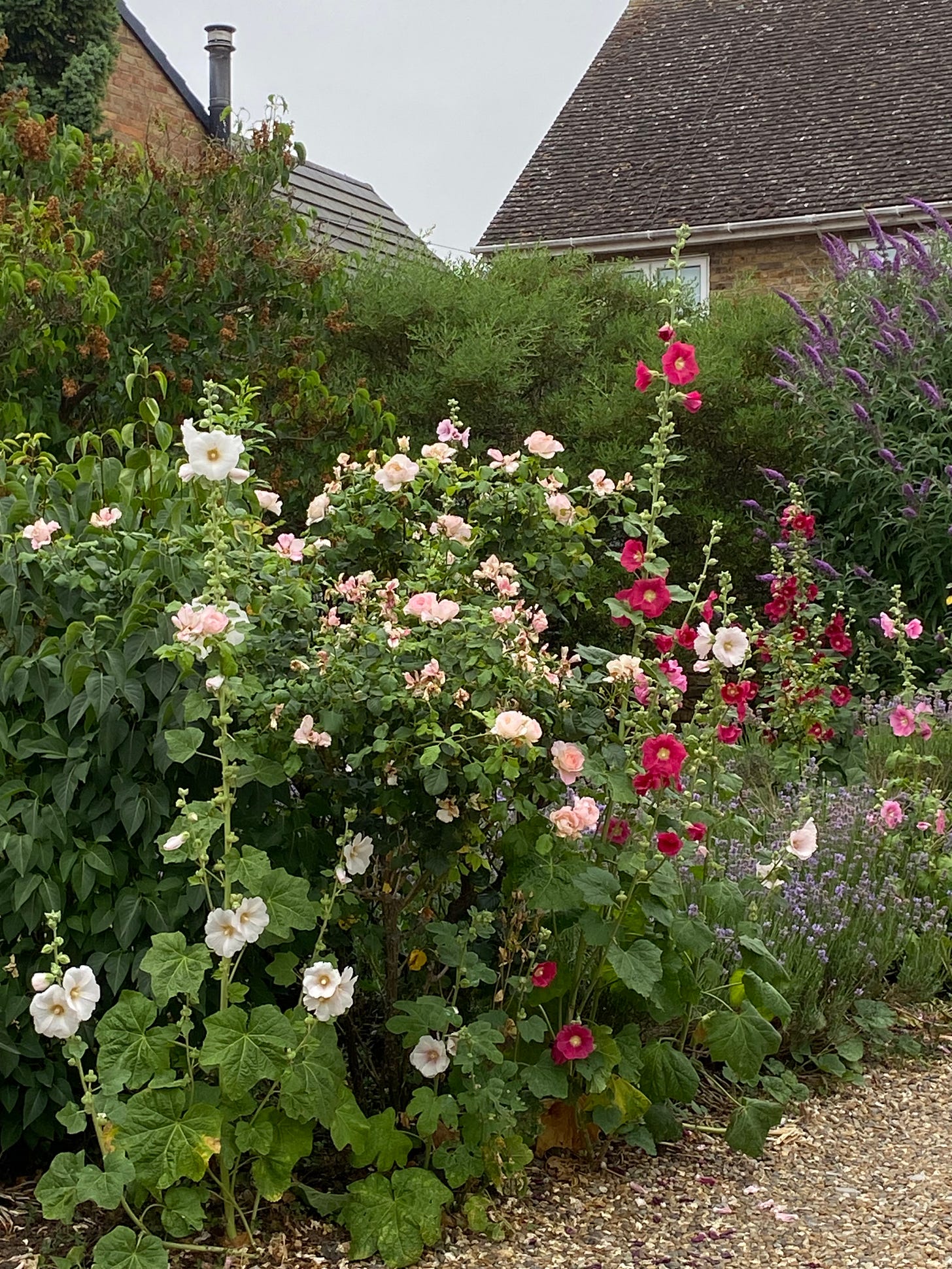
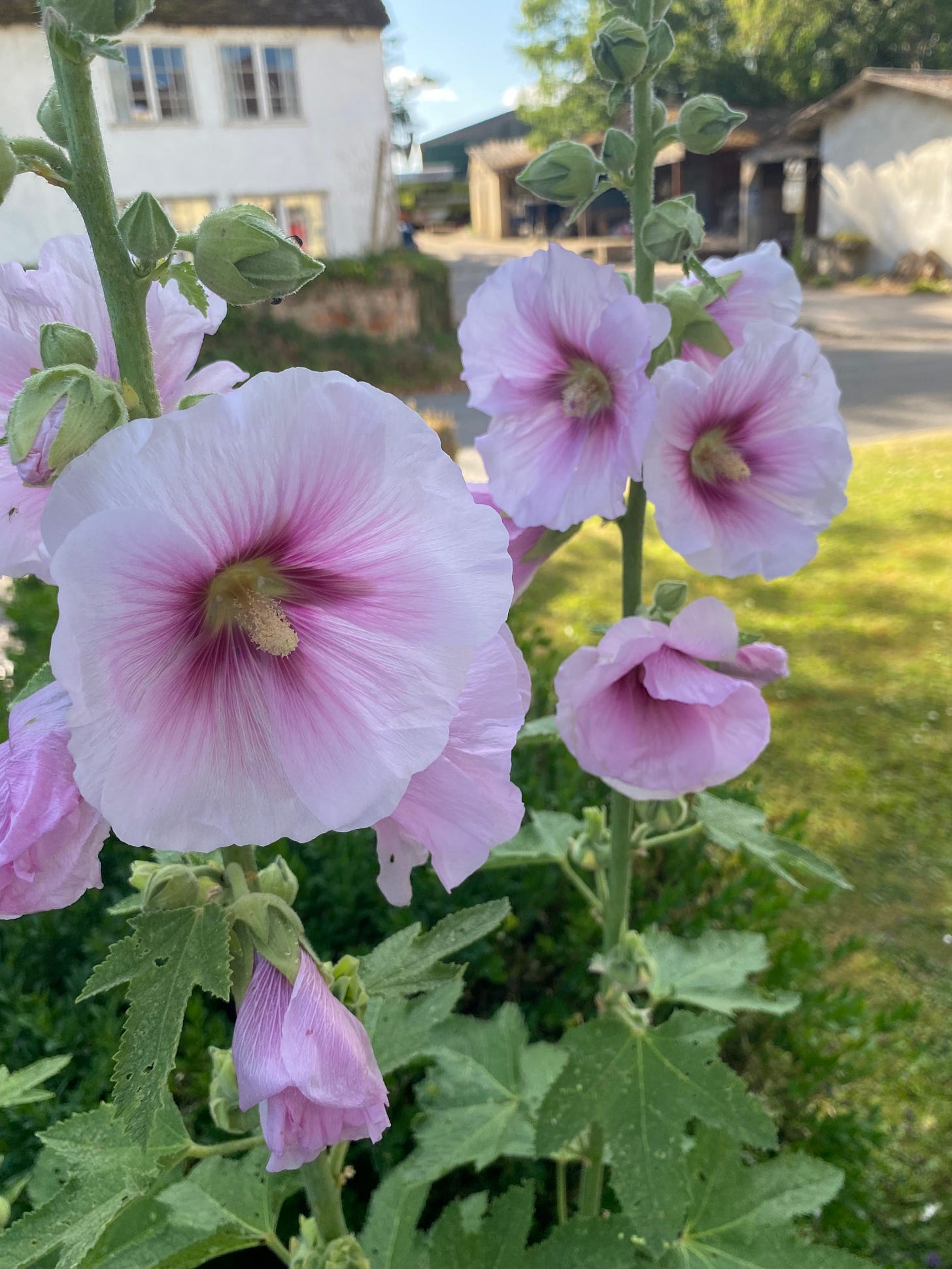
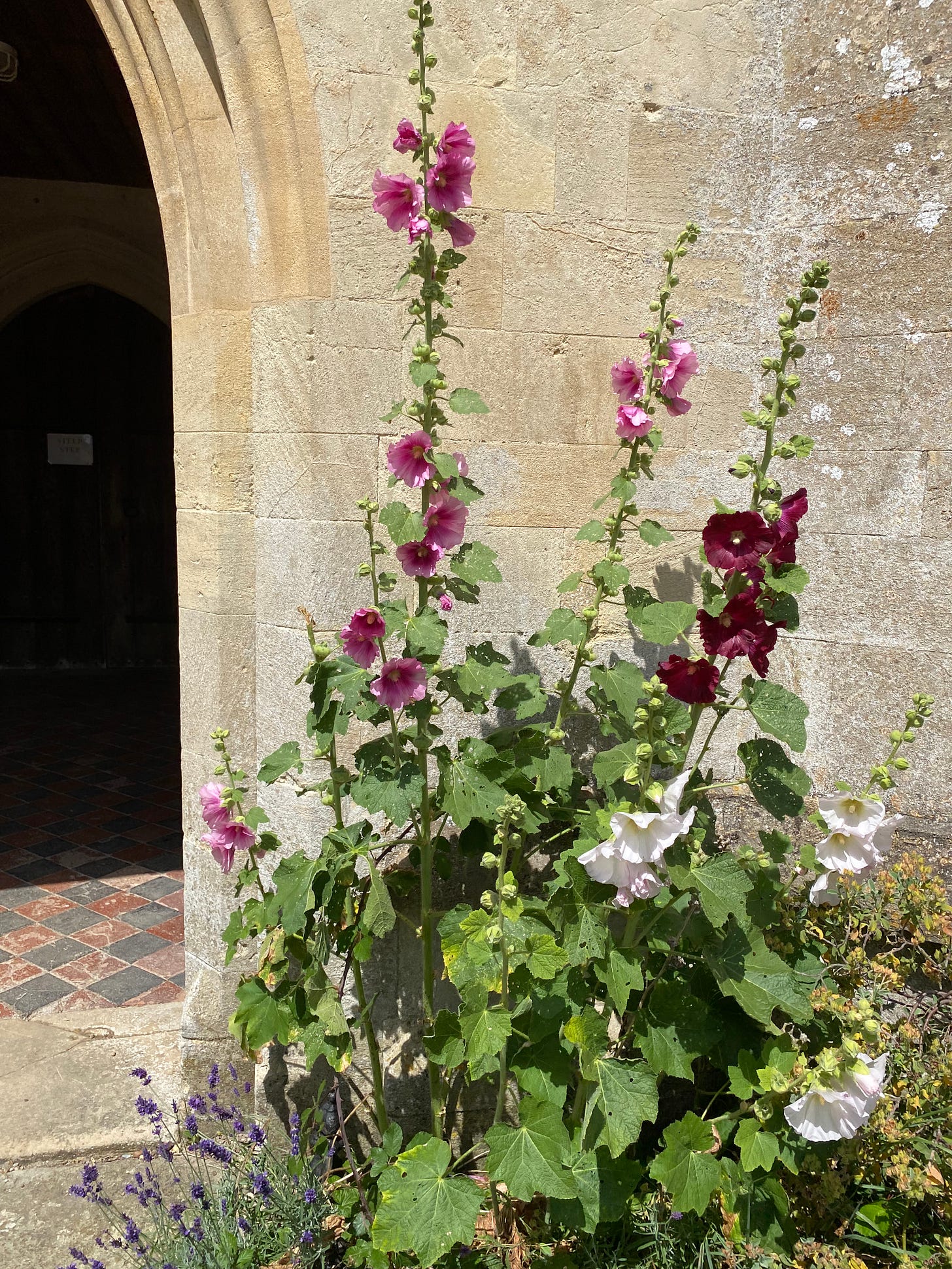

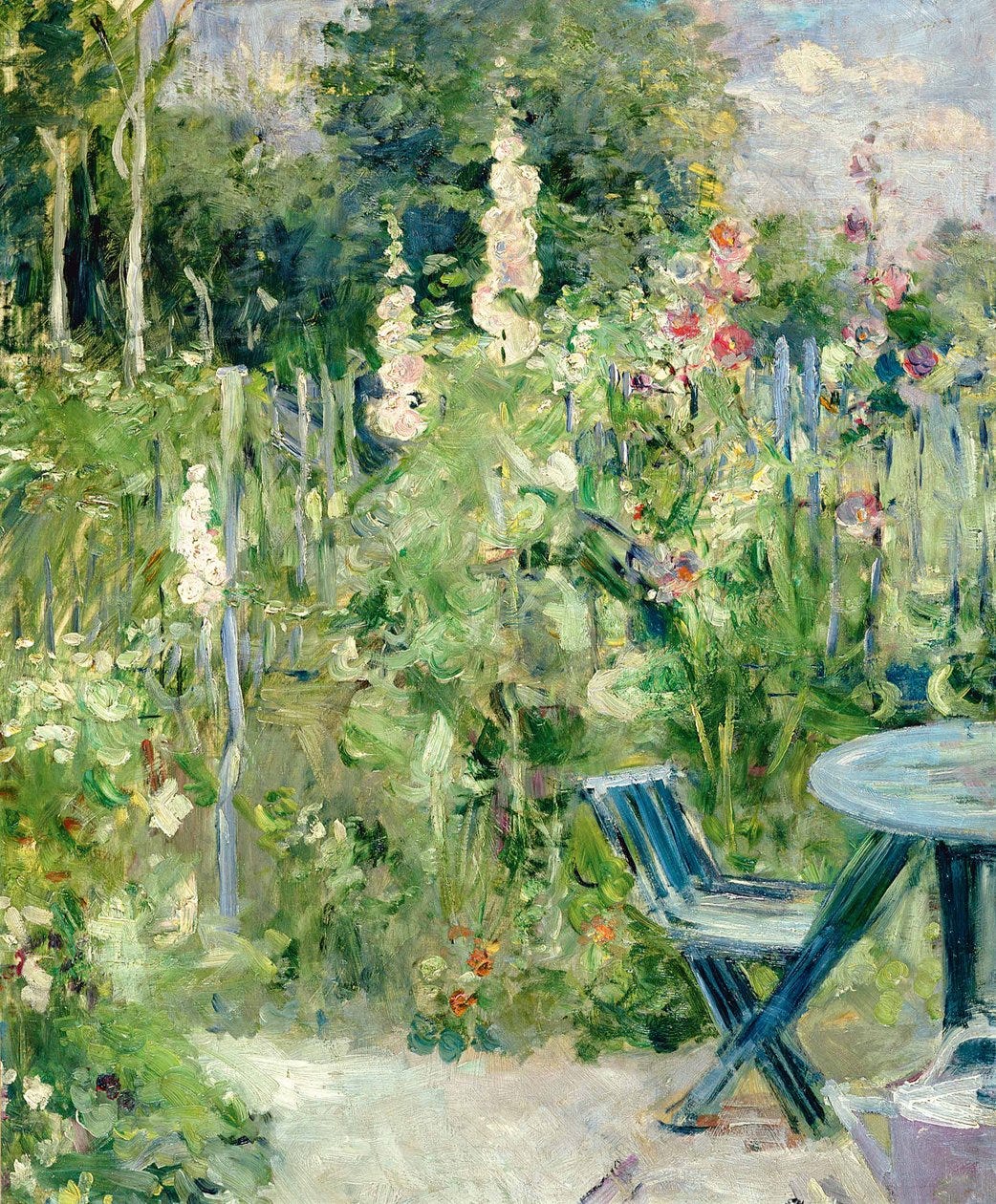

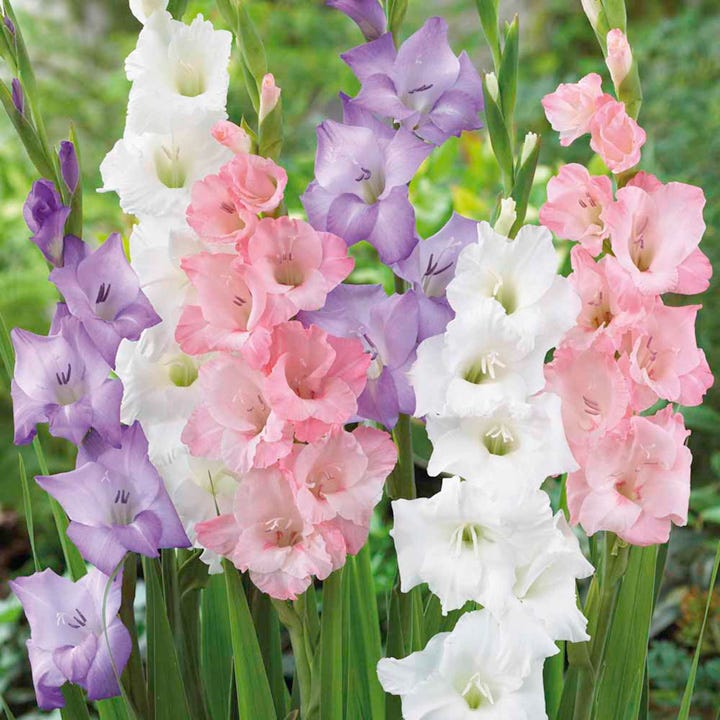
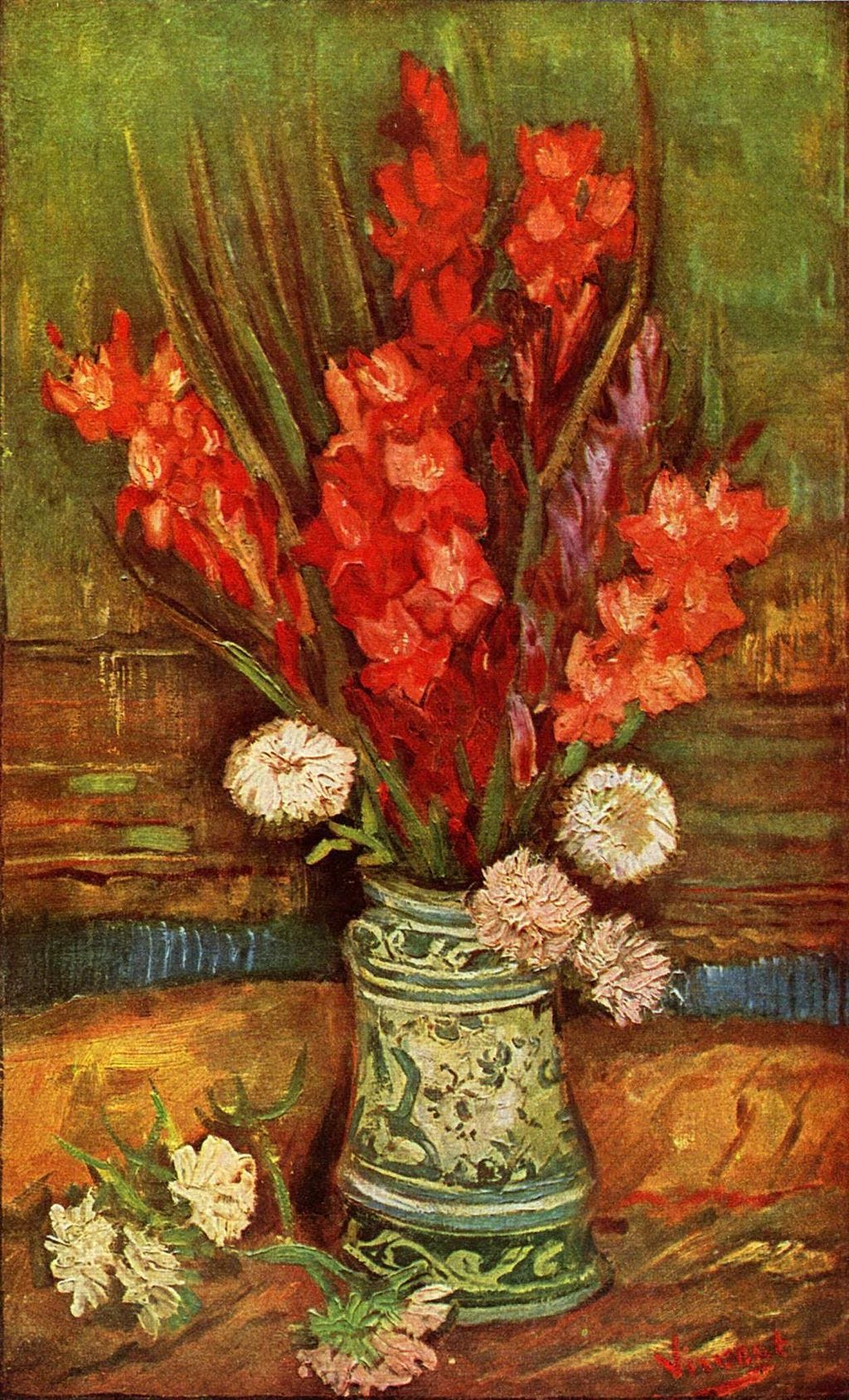


Happy birthday - slightly late but well meant!
Happy belated birthday from one 68 year old to another.